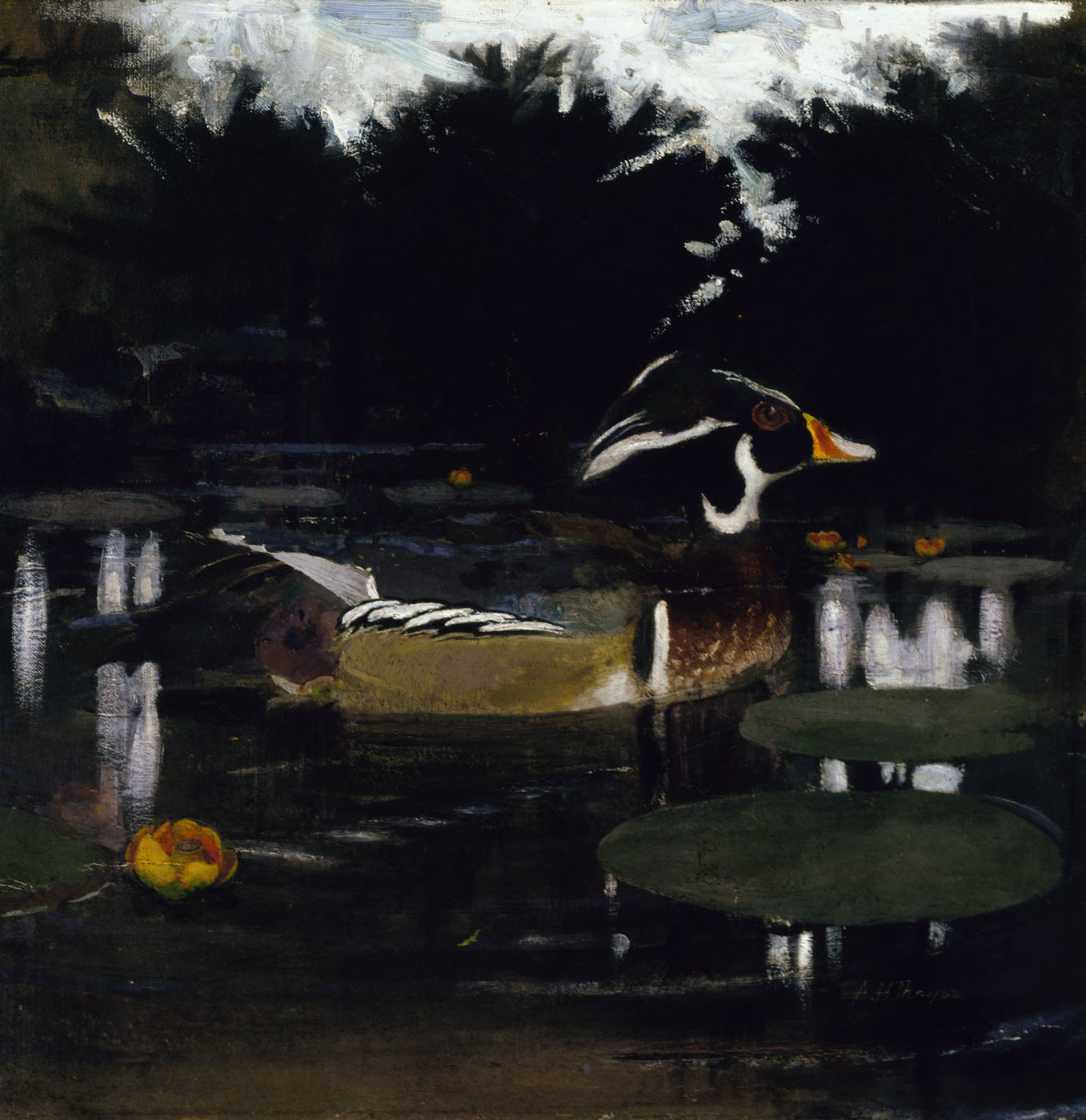Male Wood Duck in a Forest Pool, study for book Concealing Coloration in the Animal Kingdom

In 1909, Abbott Handerson Thayer and his son, Gerald, published a controversial book titled Concealing Coloration in the Animal Kingdom, offering their theory of animal camouflage. Thayer believed that the coloration of animals, no matter how eye-catching, was meant to disguise them in nature through what he called "countershading." Even bright pink flamingoes would vanish against a similar colored sky at sunset or sunrise. No matter that at times their brilliant feathers were highly visible, their coloration would protect them from predators at crucial moments so that "the spectator seems to see right through the space occupied by an opaque animal."
Not all readers were convinced. The most passionate criticism came from Teddy Roosevelt, who was in Africa when the book came out. He protested upon his return that Thayer's theory was ludicrous, arguing that on his trip he had spotted some of the animals Thayer mentioned from miles away. Roosevelt's challenge sparked a heated debate between the two men. Roosevelt wrote a 112-page article refuting Thayer's ideas; Thayer repeatedly invited Roosevelt to his home in New Hampshire, hoping to demonstrate his theories, but Roosevelt always refused (Nemerov, "Vanishing Americans: Abbott Thayer, Theodore Roosevelt, and the Attraction of Camouflage," American Art, Summer 1997)
"Our book presents, not theories, but revelations." Abbott Thayer, 1909
- 101
- Other objects by this creator in this institution
- 16
- Objects by this creator in other institutions